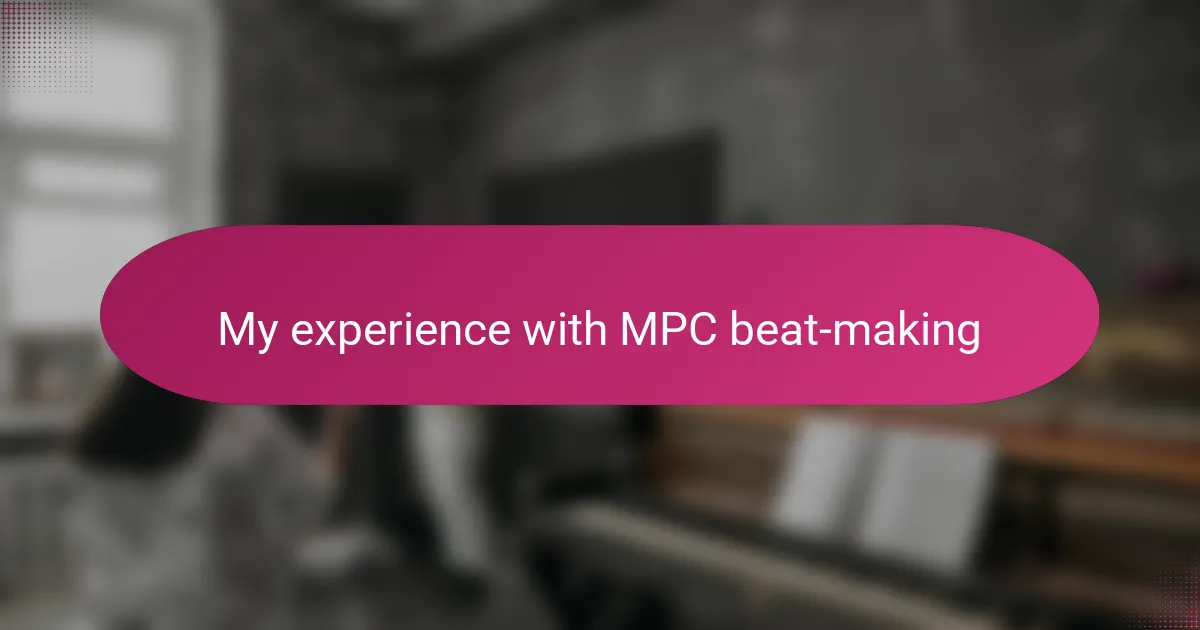Key takeaways
- MPC beat-making combines precision and spontaneity, allowing for an intuitive and expressive music creation process.
- Key features for beginners include velocity-sensitive pads, a step sequencer, and sampling capabilities which enhance creativity.
- Effective beat-making involves setting up your MPC with organized samples, custom pad sensitivity, and appropriate tempo to maintain flow.
- Overcoming challenges like timing and organization can be managed through practice, creating clear folders, and keeping equipment updated.
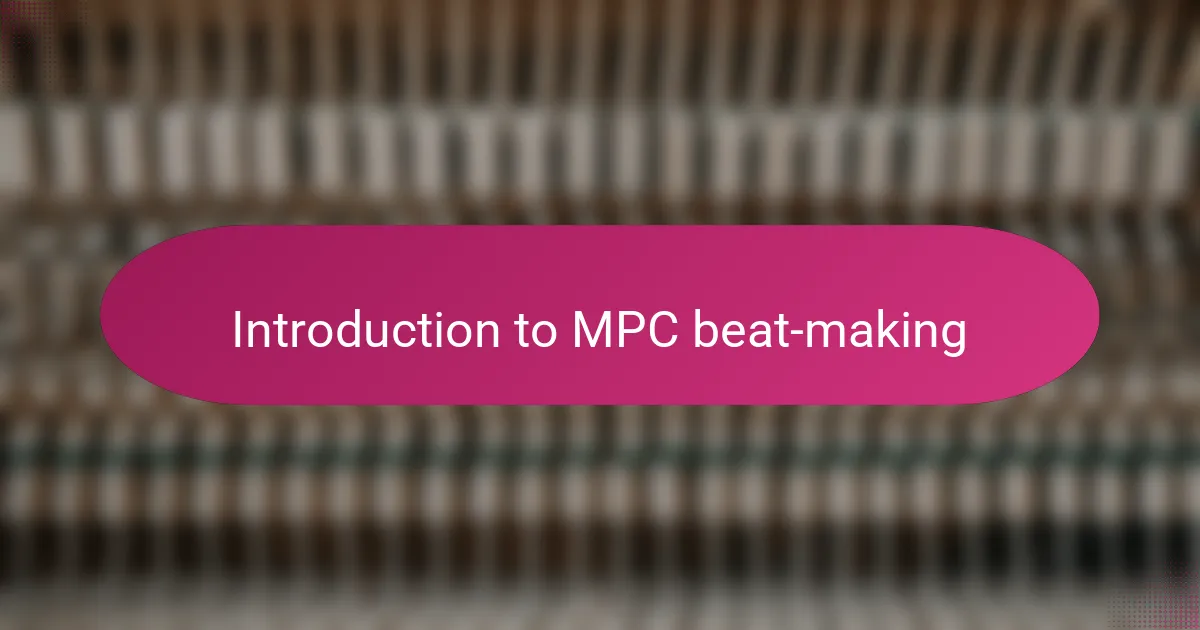
Introduction to MPC beat-making
When I first got my hands on an MPC, it felt like unlocking a new language in music-making. The tactile pads and intuitive workflow made beat crafting feel more like playing an instrument than programming sounds. Have you ever experienced that rush when a simple drum pattern suddenly turns into a full groove? That’s the magic of MPC beat-making.
What’s remarkable is how the MPC lets you layer rhythms and samples in real-time, making the creative process flow naturally. I remember late nights experimenting with different sounds, losing track of time because the interface sparked so much inspiration. It’s not just a tool; it’s an extension of your musical ideas.
In my experience, MPC beat-making offers a unique blend of precision and spontaneity. It challenges you to be both a technician and a musician, pushing you to trust your instincts while mastering the gear. Don’t you think that’s why so many rap producers swear by it?
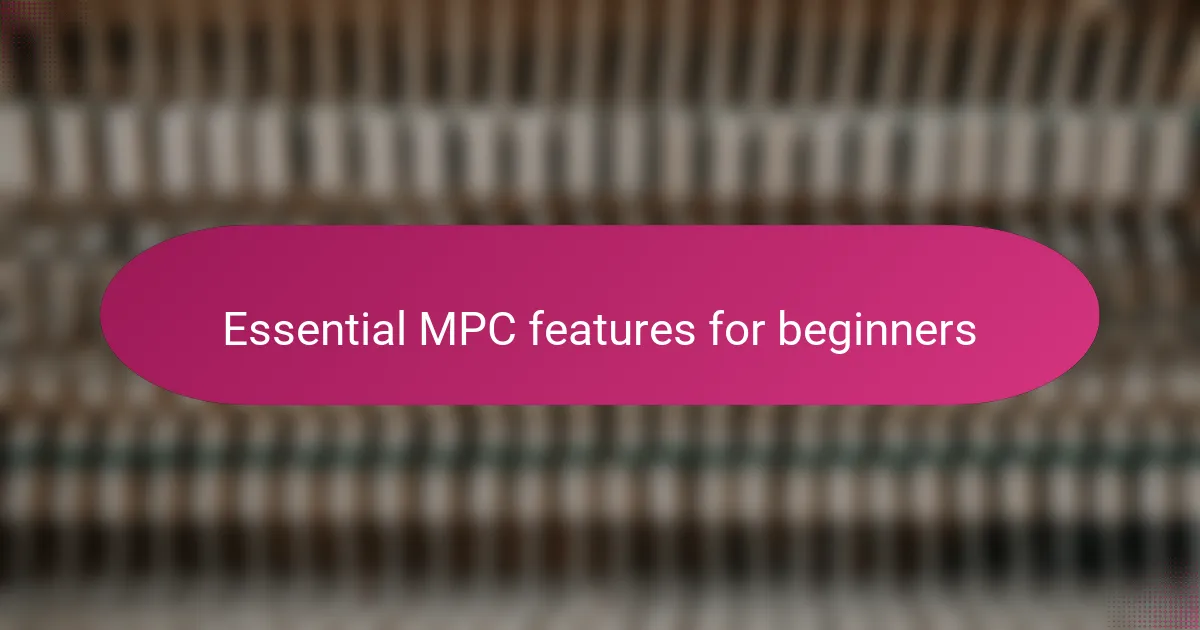
Essential MPC features for beginners
One of the first features that stood out to me as a beginner was the velocity-sensitive pads. They respond to how hard or soft you hit them, which really brings beats to life. It’s amazing how this simple aspect lets you add dynamics and groove, making rhythms feel more human and less mechanical.
Another feature I quickly grew to rely on is the step sequencer. At first, it felt a bit technical, but once I got the hang of it, layering drums and melodies became much easier. Have you ever tried building a pattern step by step and then watching it play back perfectly locked in? That moment hooked me instantly.
Sampling capabilities are also essential, especially for rap producers like myself. Being able to chop, stretch, and manipulate samples right on the MPC is a game-changer. It’s in these moments—when a sample transforms under your fingertips—that I’ve found the most inspiration and joy in beat-making.
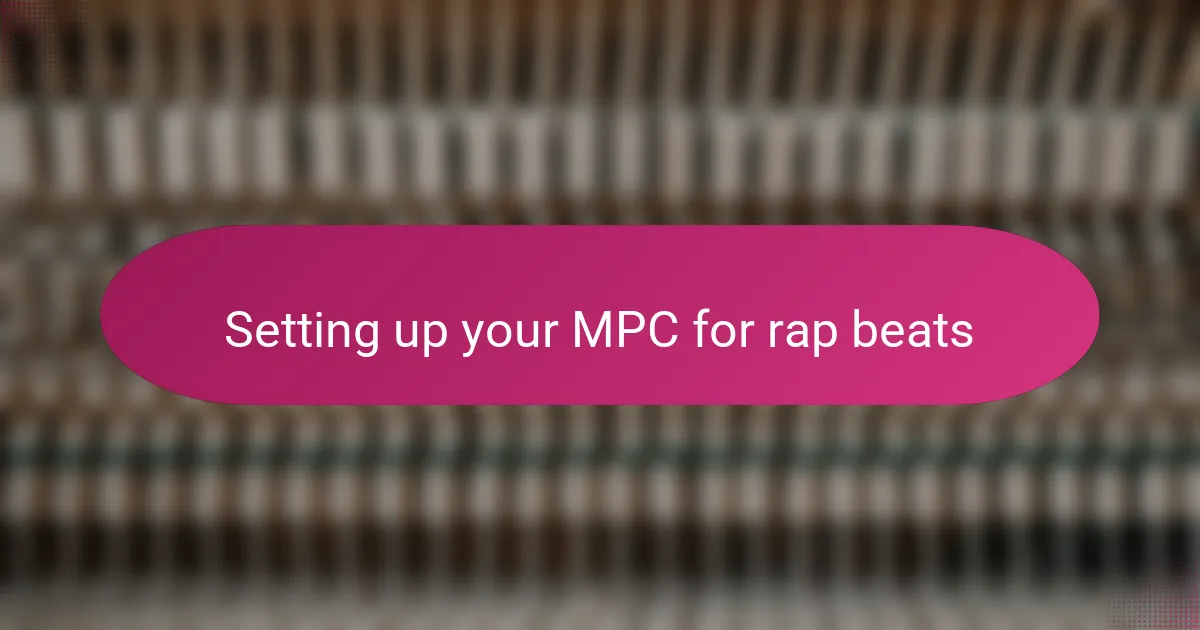
Setting up your MPC for rap beats
Getting your MPC ready for rap beats is like setting the stage before a show—you want everything just right. For me, the first step always involves organizing my drum kits and samples so they’re easy to access. Have you ever tried hunting for sounds in the middle of a groove? It kills the vibe fast.
Another thing I learned early on is to customize the pad sensitivity and velocity curves to match my playing style. When the pads respond exactly how you expect, it feels like the machine knows what you want before you even hit it. That connection really fuels creativity and keeps the flow going.
Lastly, setting up the right tempo and swing is crucial. I usually dial in a slight swing to give the beat that natural, head-nodding bounce so essential for rap. Don’t those subtle timing shifts make you want to move? Getting this groundwork laid makes the whole process smoother and way more enjoyable.
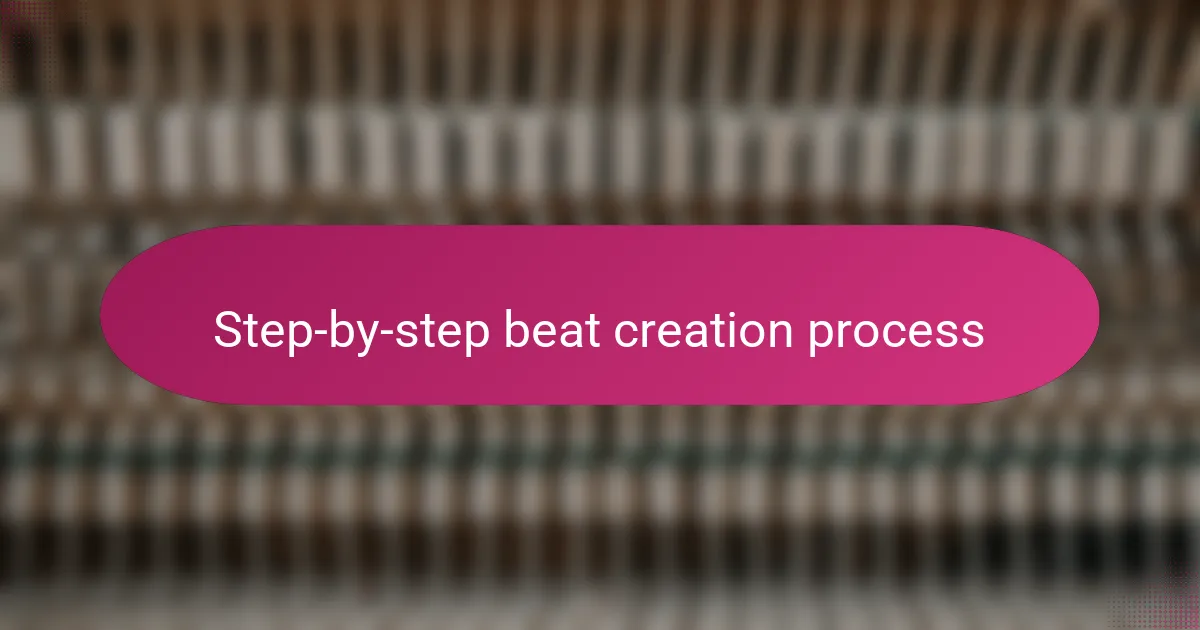
Step-by-step beat creation process
The first thing I do when starting a beat is lay down a simple drum pattern on the pads. It’s almost like sketching out a rough draft—just getting that foundational rhythm down before building anything else. Have you noticed how a basic groove can suddenly spark ideas just by itself?
Once the drums are rolling, I move on to layering samples and melodies. This part feels like painting with sound, carefully adding colors and textures to create a mood. Sometimes, I find myself tweaking little details over and over, chasing that perfect vibe that pulls the beat together.
Finally, I use the MPC’s step sequencer to tighten everything up, making sure each element locks in rhythmically. It might seem technical, but for me, it’s where the magic happens—turning raw ideas into a polished groove that feels alive. Don’t you love that moment when everything just clicks?
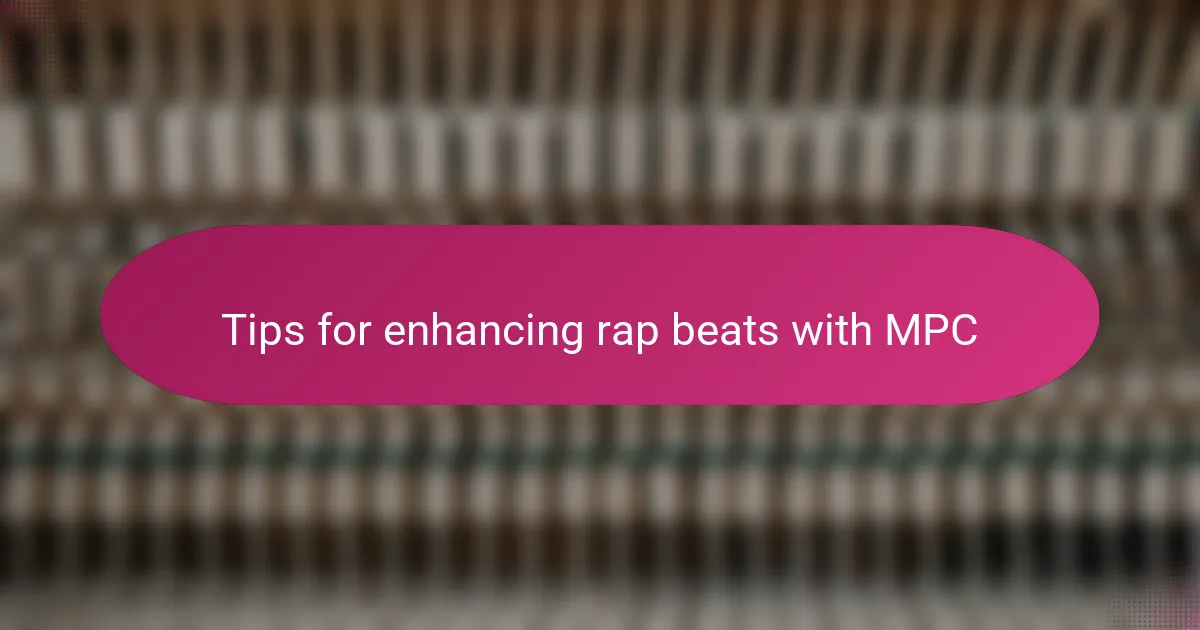
Tips for enhancing rap beats with MPC
One tip that transformed my MPC sessions was experimenting with layering subtle percussion sounds beneath the main drum hits. It’s incredible how adding these tiny rhythmic details can make a beat feel richer and more textured. Have you ever noticed how those quiet hi-hats or shakers suddenly give the track a sense of movement, almost like breathing life into it?
I also found that tweaking the swing setting on the MPC is a game-changer for rap beats. Pushing just a little swing can shift a rigid pattern into something that grooves naturally. It’s funny how a simple timing adjustment can make the difference between a beat feeling robotic or soulful—don’t you think that subtle groove is what keeps heads nodding?
Another thing I swear by is using the MPC’s real-time sampling while jam sessions are happening. Capturing spontaneous moments and immediately chopping them into new rhythms adds an unpredictable, creative spark. There’s something magical about turning a random sound into a tight rap beat on the fly—it’s those moments I remember as pure inspiration.
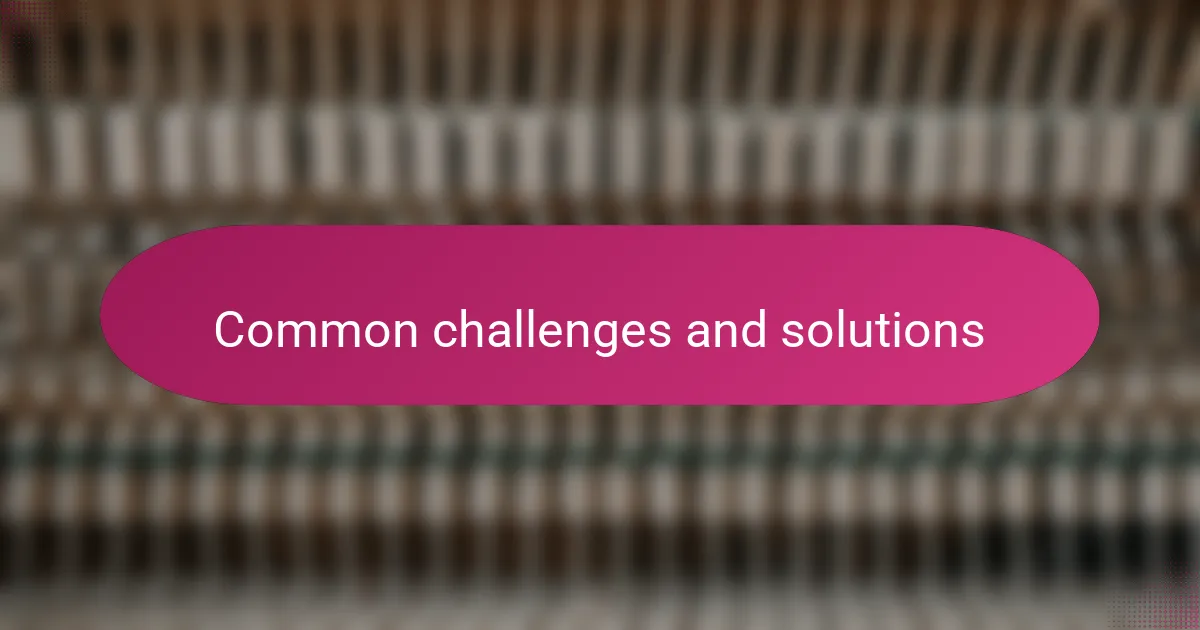
Common challenges and solutions
One of the biggest challenges I faced when starting out with MPC beat-making was getting used to the timing. At first, playing the pads and keeping everything locked in felt clunky, almost like my fingers were out of sync with the groove. Have you ever struggled to hit the pads just right? What helped me was practicing with the metronome and gradually increasing the tempo, which made my timing feel more natural over time.
Another hurdle was organizing samples and drum kits efficiently. Early on, I lost countless creative moments hunting for the right sound in the middle of a session. It was frustrating, to say the least. I found that creating folders and labeling kits clearly saved me so much hassle and actually kept my creative energy flowing instead of breaking the vibe.
Sometimes, technical issues with the MPC itself—like firmware glitches or latency—would throw me off, making the whole process feel more like troubleshooting than creating. Instead of letting it kill my momentum, I learned to keep my gear updated and to back up my projects regularly. Have you experienced that panic when your beat suddenly skips? Being prepared is key to staying in the zone.
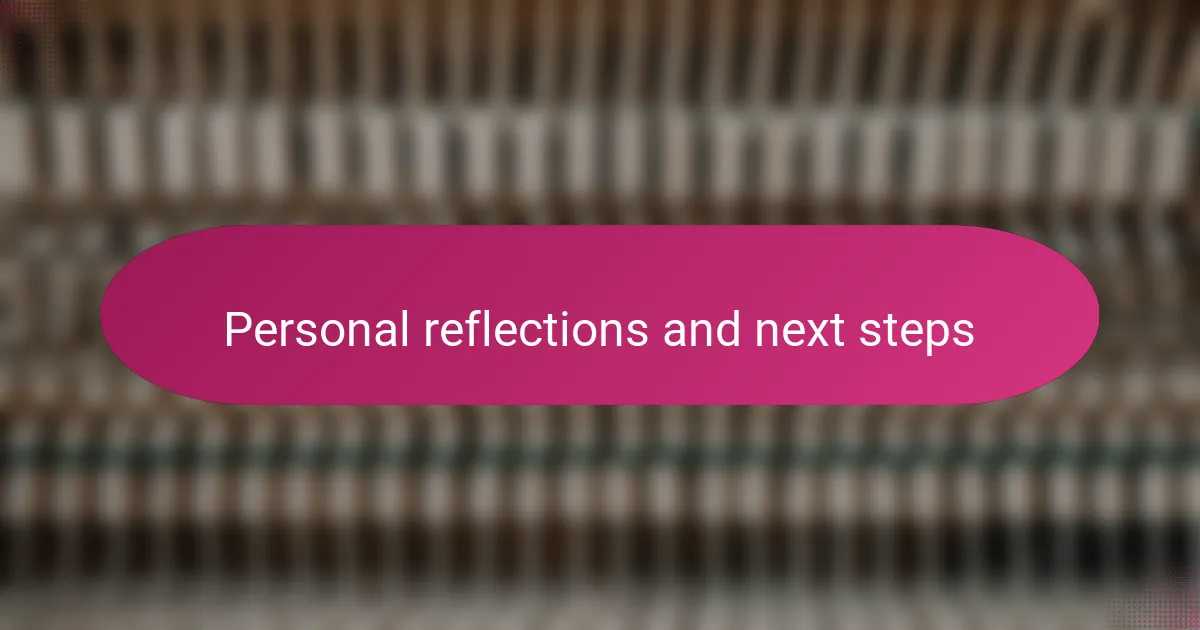
Personal reflections and next steps
Reflecting on my journey with MPC beat-making, I realize how much patience and persistence it requires. There were moments when frustration almost took over, especially when a beat didn’t quite come together as imagined. Have you ever felt stuck in the creative process? For me, pushing through those rough patches led to breakthroughs that made the effort totally worth it.
Looking ahead, I’m eager to dive deeper into sampling techniques and explore more complex rhythms. The MPC keeps challenging me to grow, and I’m excited to blend new sounds and textures into my beats. What’s next on your beat-making journey? For me, it’s all about experimenting fearlessly and letting the music guide the way.
Ultimately, the MPC has taught me that making music is as much about embracing imperfections as it is about striving for perfection. Each beat is a learning opportunity, and every session adds to my creative toolbox. How do you keep your momentum when progress feels slow? I find that celebrating small wins keeps the passion alive and the beats flowing.
